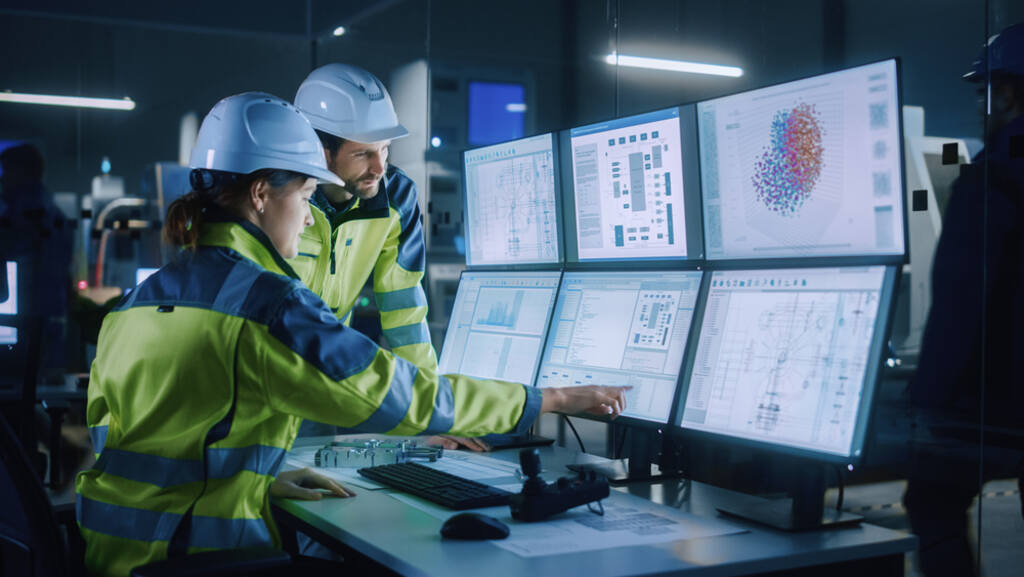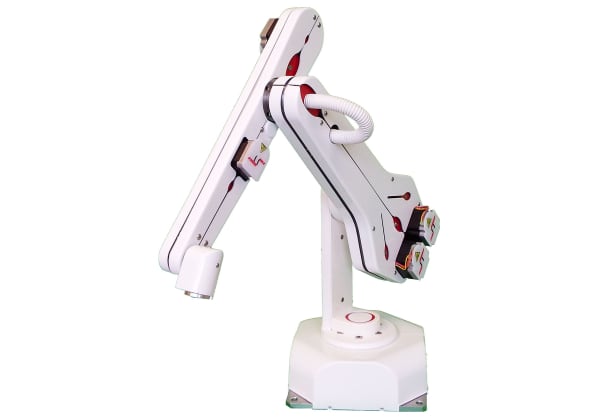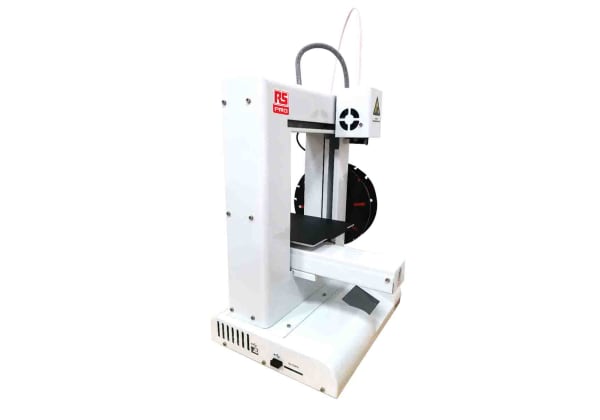- Published 14 Oct 2024
- Last Modified 14 Oct 2024
- 9 min
Industry 5.0: Its Meaning and Impact
What is the 5th Industrial Revolution? Are we already living it, and how will it change the world? This article will tell you everything you need to know about Industry 5.0.

Even though businesses are still catching up on Industry 4.0’s innovations, the concept of Industry 5.0 is already catching on: a renewed focus on the good industry can do instead of just its efficiencies. As the world’s technologies and challenges progress at similarly rapid rates, Industry 5.0 and sustainability will be inextricably linked as a means of improving society. This guide will introduce Industry 5.0 and what it can bring to your business and the world.
What is Industry 5.0?
Industry 5.0 is the Fifth Industrial Revolution, and its concepts have arisen very rapidly in the wake of Industry 4.0. The industrial revolutions so far saw the rise of the following technologies:
- 1.0: Steam-driven industrial machinery
- 2.0: Electricity and factory assembly lines
- 3.0: Electronics, computers, and automation
- 4.0: Internet-connected industrial devices allowing seamless integration of business operations
The 5th Industrial Revolution distinguishes itself from the others in its focus on how industry affects workers, society, and the planet. World-changing and life-improving as they were, the other revolutions essentially focused on profit, and today they carry some connotations of pollution and exploitation (especially Industry 1.0). The Industry 5.0 definition, however, is a drive to make advanced technologies, automation, and robotics enhance the worker experience and contribute a net positive to the world.

When Did Industry 5.0 Start?
The concept of Industry 5.0 developed in the wake of a 2016 Japanese concept called Society 5.0. This idea similarly distinguished human development into phases, but more broadly and completely; the idea of society’s anchor shifting from hunting and gathering, to agriculture, to industry, to information, and now to interconnection. Rather than humans simply accessing and acting on information in cyberspace, Society 5.0 features humans, IoT devices, and AI continuously exchanging information to develop solutions not previously possible. It posits that the world’s progressively advanced technologies can provide ongoing solutions to the equally advanced challenges we face.
This concept soon evolved into the parallel idea of Industry 5.0, which applies the same hopeful outlook to how industry can practically use interconnected technologies to better the workplace and the world. Given that Industry 4.0 technologies had only risen to prominence around 2010, Industry 5.0 developed much more rapidly than its predecessors.
Difference Between Industry 4.0 and 5.0
Though Industry 5.0 and 4.0 share many concepts and use many of the same technologies, they differ in several important ways. Essentially, Industry 4.0 seeks optimised business production and efficiency through a ‘set it and forget it’ system of automated Industrial Internet of Things (IIoT) devices performing tasks on their own. Industry 5.0 reintroduces (and revalues) the human element by having AI, industrial robots, and enterprise IoT systems help humans make better decisions and perform advanced tasks with intentionality.
Here are some specific comparisons of Industry 4.0 vs 5.0:
Industry 4.0 | Industry 5.0 |
|---|---|
| Viewing interconnected technology as a means towards business success | Going a step further by striving to use advanced technologies to also uplift the business’s employees, community, and environment |
| Using robots and automation to reduce or eliminate human workers | Deploying these technologies to enhance workers’ jobs and help them make decisions |
| Connecting anything and everything industrial over the internet with a primary focus on productivity | Carefully considering internet security and privacy when adopting IIoT technologies |
| Seeing automation as merely a way to reduce humans needing to do repetitive or mundane tasks | Realising that automation can also allow workers to focus on tasks requiring true creativity and intuition to make choices and solve problems |
| Striving to adopt automation, robotics, and AI in as many industrial aspects as possible | Analysing the safety hazards of automation and its potential for causing business losses when errors happen due to a lack of human intervention |
| Enabling greater customisation of consumer products due to lower business costs | Focusing primarily on designing better customer experiences and giving less weight to cost |
| Optimising the supply chain for speed of delivery | Innovating supply chains while considering their effects on sustainability, economics, and preparations for emergencies |
Industry 4.0 has certainly improved and enhanced our lives, to be sure. Industry 5.0, though, has a primary objective of allowing society to improve and thrive.
Industry 5.0 Advantages and Disadvantages
Like any developing technology, the 5th Industrial Revolution offers many improvements that must be carefully implemented to avoid problems.
Benefits of Industry 5.0
The Fifth Industrial Revolution can benefit companies, their customers, and their communities in the following ways:
- Designing supply chains to better withstand shocks to the system, though without becoming wasteful
- Alerting consumers of their needs for equipment maintenance or even health checkups
- Creating valuable, fulfilling jobs for the skilled workers who will work alongside Industry 5.0 industrial robots
- Reducing safety and lost-time hazards from automation by deploying it thoughtfully and considering where it could go wrong
- Avoiding internet security breaches by carefully considering all IIoT devices’ vulnerabilities
- Improving company reputation by aiming to deliver a net positive rather than settling for smaller goals like net zero or minimised waste
Industry 5.0 Challenges
Implementing advanced technologies like automation, industrial robots, and AI is no simple task. Beyond the significant upfront costs, businesses need to carefully plan procedures for using these systems and then test them extensively to find and mitigate bugs and hazards.
As with Industry 4.0, Industry 5.0 technology relies on large amounts of instrumentation, data transfer, data storage, and computational power. Along with equipment purchases and upkeep, there are great energy and cooling needs. Given the alignment of Industry 5.0 and sustainability, any true application of this system needs to consider this energy usage. This can mean selecting sensors and system features with more intentionality rather than just placing sensors everywhere and assuming they all add value.
Since the 5th Industrial Revolution strives to find new, more fulfilling roles for the staff automation supplants, this means a set of human resources challenges. This includes training, defining responsibility, reassessing compensation, and convincing staff that changing roles is in their best interest.
The greatest challenge of the 5th Industrial Revolution, however, is the adaptability and will to adopt it. Industry 5.0 is less focused on immediate business wins since it focuses on the long term for the good that a business can do. This can be counterintuitive to more profit-geared business mindsets, so any company embracing Industry 5.0 must first align its objectives and mission statement with sustainability and the welfare of its staff and community.
Are There Any Industry 5.0 Examples?
Industry 5.0 technology is in its early stages and is in many ways similar to that of Industry 4.0. To help distinguish Industry 4.0 vs 5.0 differences, let’s review some established Industry 4.0 examples:
Industry 5.0 technology is in its early stages and is in many ways similar to that of Industry 4.0. To help distinguish Industry 4.0 vs 5.0 differences, let’s review some established Industry 4.0 examples:
- IoT (Internet of Things) Devices: These are all the industrial devices that can upload their collected data to or receive remote instructions from the internet. Examples include smart warehouses that sense their inventory levels and coordinate with inventory management systems.
- Sensors and Instruments: The IoT runs on data, and it needs instruments to sense and collect that information. Temperature sensors, pressure sensors, vibration sensors, proximity sensors, and RFID tags all supply the IoT with its info.
- Industrial Robots: Robots in Industry 4.0 typically perform repetitive, precise tasks like welding, painting, and packaging.
- Edge Computing Devices: These devices process data close, physically, to the instruments that collect it, allowing ready-made decisions to travel through IoT connectivity, thus reducing latency and bandwidth usage.
- Data Storage and Cloud Infrastructure: All these sensors collecting data and IoT devices exchanging it need large volumes of secure, readily accessible data storage. Data centres and versatile, user-friendly cloud platforms make this happen, and they also add data analytics and machine learning for further Industry 4.0 contributions.
Now, here are some practical Industry 5.0 use cases:
- Collaborative Robots (Cobots): Cobots are meant to be assistants to manufacturing workers rather than replacements for them. These devices often take the form of robot arms that are simple to program, can learn from human movement (using AI), and easily take on repetitive or dangerous tasks. This can leave workers free to plan the cobot’s work, make decisions requiring creativity and intuition, and perform tasks too crucial or precise to be left to automation.
- Advanced Human-Machine Interfaces (HMIs): Advanced technologies can now receive inputs from us in more intuitive and natural ways: Gesture and facial recognition, voice control, and combinations of these (multimodal interfaces). This allows seamless collaboration and fewer hurdles towards machines improving our lives. Machines can even interface with human bodies themselves, such as with glucose meters that could predict a diabetes patient’s benefits from and reaction to an artificial pancreas.
- 3D Printers and Additive Manufacturing Machines: The Industry 5.0 technology of 3D printing is revolutionising product design and manufacture, given that it allows rapid prototyping, minimised material waste, and reduced inventory costs, along with product complexity previously unachievable. They can print parts that offer quick and affordable solutions to challenges in our lives and can give old equipment with discontinued parts a second chance at life.
- Smart Energy Management Systems: With energy efficiency more important than ever, systems for managing it are vital. The right smart technology behind the scenes can optimise energy consumption and reduce waste in industrial businesses, as well as integrate with renewable energy technology like solar panels and wind turbines.
- Sustainable and Green Technologies: Efficiency extends to the primary machines of industry as well. Energy-efficient motors, regenerative braking systems, and environmentally friendly materials all help reduce the carbon footprint and improve the sustainability of industrial operations, leading towards Industry 5.0 manufacturing.
Industry 5.0’s potential can span a business’ efficiency, innovation, and employee retention but also the uplifting of the individuals, communities, and ecosystems that the business touches. Explore RS to learn more about industrial robots and other key factors in the 5th Industrial Revolution.
Related Articles
Related links
- The future of industry 4.0
- The Industrial IoT and Smart Factories
- Making the IIoT work for your business
- The Race for Quantum Computing Supremacy
- Revolution PI RevPi Connect 5 22W 32 GB, 4
- Revolution PI RevPi Connect SE 20W 16GB (Flash) / 1GB (RAM), 4 Linux
- Revolution PI RevPi Connect SE 20W 32GB (Flash) / 1GB (RAM), 4 Linux
- What is an FPGA?


